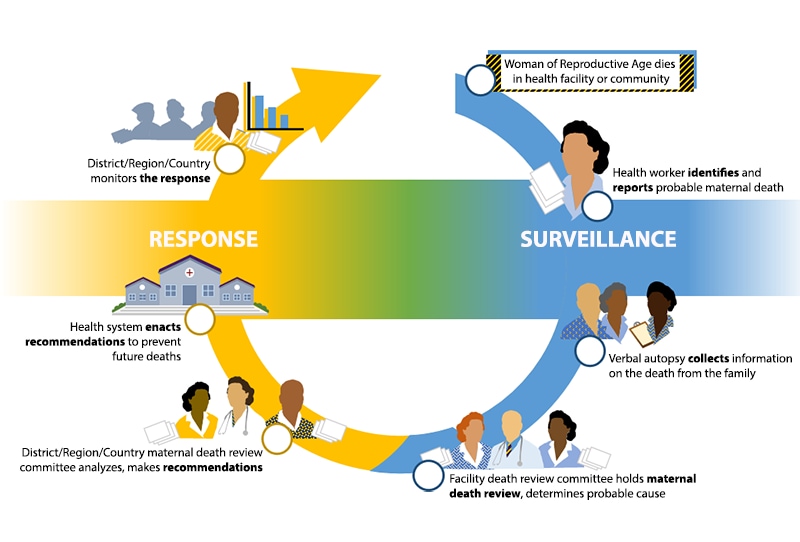Maternal Death Surveillance and Response
Investigating and Reducing Maternal Deaths
A Maternal Death Surveillance and Response (MDSR) system is a continuous cycle of maternal death identification, notification (reporting) and review, followed by interpretation of review findings, response, and actions to prevent future deaths.

The purpose of the MDSR is to prevent future maternal deaths by learning from previous deaths. This is done by identifying and studying each death, then developing and enacting recommendations to prevent future deaths from similar causes.
MDSR is especially helpful in countries where official data systems may not record many of the births and deaths and where the risk of maternal death is high. By using MDSR to count, investigate, and learn from each death, countries can enact changes to reduce the number of maternal deaths.
CDC has collaborated with the World Health Organization (WHO) and other global partners to develop and strengthen MDSR guidance and tools, including the following:
- Maternal and perinatal death and surveillance and response: materials to support implementation (who.int)
- Maternal Death Surveillance and Response Technical Guidance
- Beyond the Numbers: Reviewing Maternal Deaths and Complications to Make Pregnancy Safer
- A global survey that documents MDSR implementation in countries
Using MDSR to Improve Maternal Health Programs
CDC has worked with Ministries of Health and local health staff to adopt or improve MDSR systems, and to adapt them to the local conditions and needs. This collaborative work has been focused in the following areas:
- Preparing to implement MDSR
- Developing national MDSR guidelines in Uganda, Haiti, Cameroon, and Zambia.
- Training health staff at all levels of the health system to carry out each stage of the MDSR cycle.
- Developing a checklist to determine MDSR implementation readiness in humanitarian and vulnerable settings, such as refugee camps, in collaboration with the United Nations Population Fund and the WHO.
- Improving MDSR data accuracy and analysis for better understanding and decision-making
- Improving the identification and reporting of deaths, resulting in more accurate data on the number and causes of maternal deaths.
- Analyzing and interpreting MDSR data to identify and enact facility-based actions to reduce maternal deaths.
- Compiling and analyzing MDSR data to show the effect of program activities on reducing maternal deaths.
- Mapping locations of maternal deaths using Geographic Information Systems (GIS).
- Working in new areas of MDSR
- Developing improved indicators for monitoring MDSR systems globally, in collaboration with WHO and the United Nations Population Fund.
- Creating a Maternal Death Surveillance and Response Implementation Guide, a practical guide for setting up maternal and perinatal death surveillance systems, in collaboration with the WHO.
- Collaborating within CDC (with the Division of Global Health Protection) on a pilot test of maternal and perinatal death surveillance (MPDSR) in refugee camps located in Chad and Uganda.
- Conducted a content analysis from 56 MDSR reports published between 2011 and 2020 by low- and middle-income countries to identify core themes and indicators.